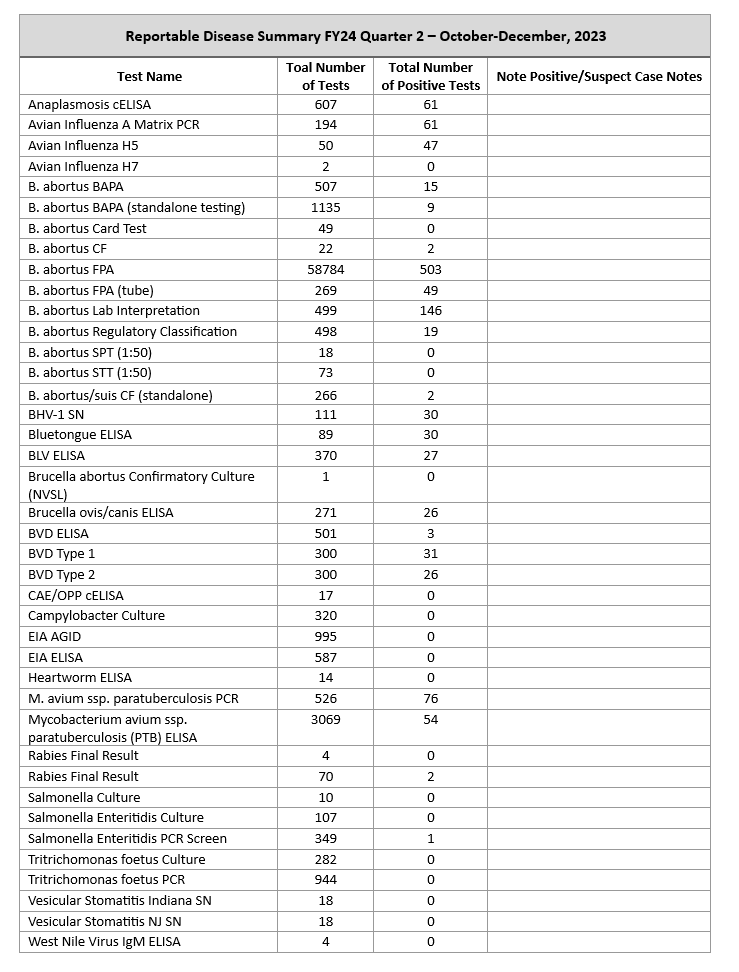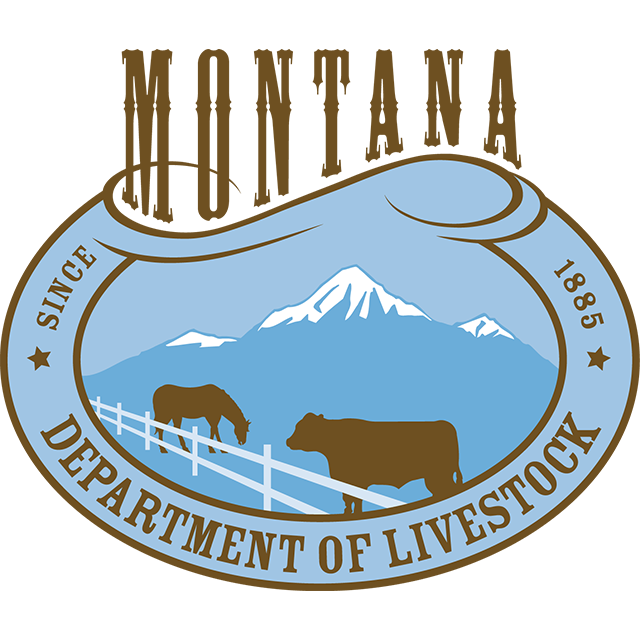
Here to serve the people of Montana and its livestock industry.
Animal Health Bureau
- Permits & Forms
- Brucellosis
- Brucella canis
- Feral Swine
- High Path Avian Influenza
- Johne's
- Rabies
- Trichomoniasis
- West Nile Virus
- National Poultry Improvement Program (NPIP)
- Pay for Permits Online
Helpful Links
Contact Information
Department of Livestock
Animal Health Bureau
PO Box 202001
Helena, MT 59620-2001
Email: livemail@mt.gov
FY24 Q2 Disease Reporting
Click the highlighted link below to go directly to that section.
- Brucellosis
- Brucella canis
- Johne's
- Rabies
- Trichomoniasis
- Montana Foreign Animal Disease (FAD) Investigations FY24
- Montana Reportable Diseases FY24
Montana Brucellosis FY23 and FY24 YTD Comparison Tests
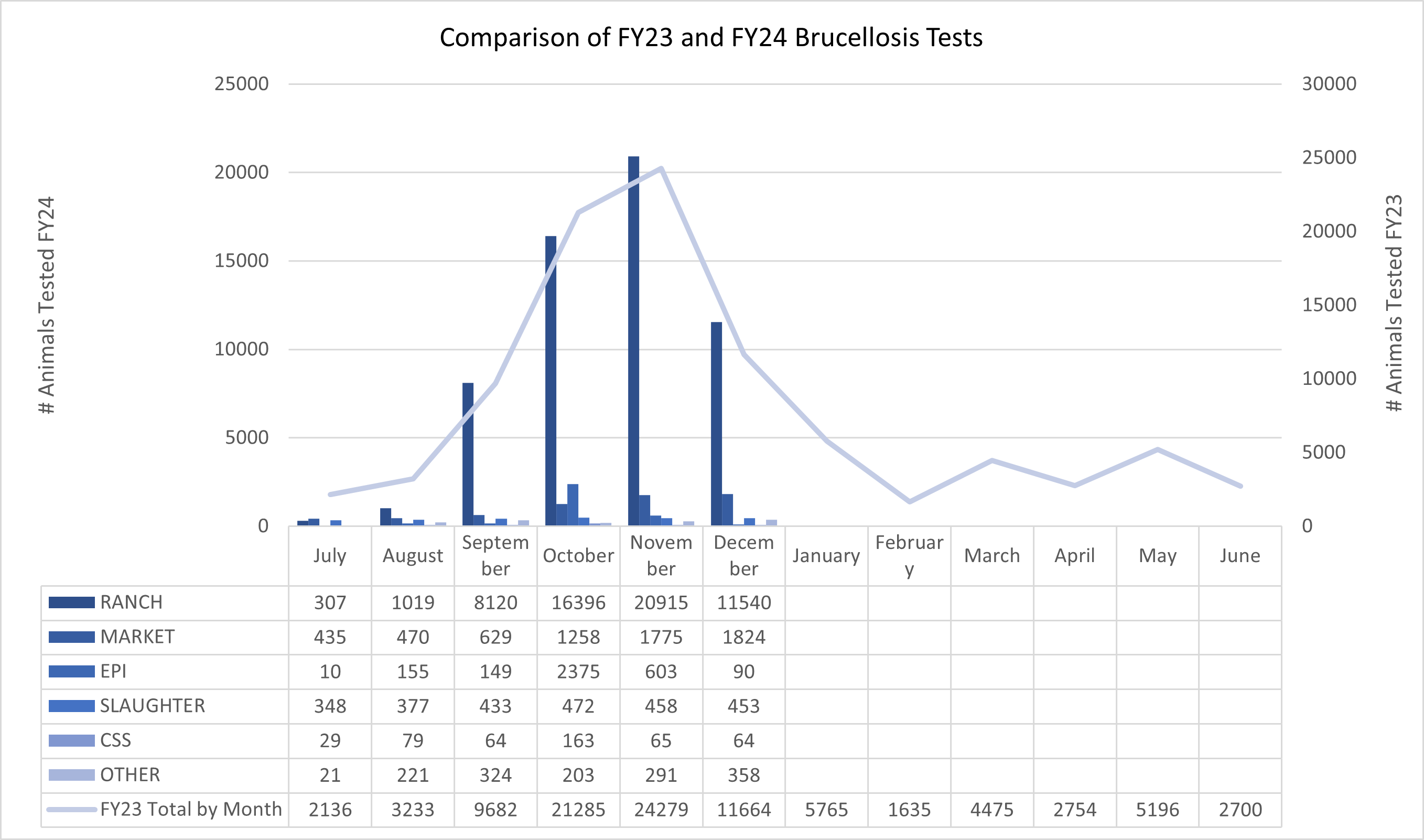
The graph above shows a comparison of the number of animals tested for Brucellosis in FY23 and FY24 through the current quarter, with data for each month, breaking down the total number of tests by category such as Ranch, Market, Epidemiological (Epi), Slaughter, Certified Semen Service (CSS), and Other. Generally, the trend in test numbers is consistent from year to year, although test numbers for September 2023 were higher. Test numbers follow the seasonality of the cattle production cycle and are useful in predicting program expenditures.
Designated Surveillance Area (DSA) Reimbursements for Testing & Vaccination Q2
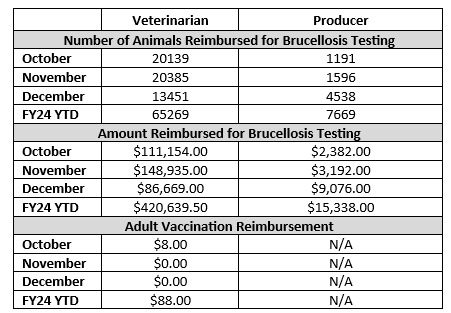
Department reimbursement for testing has helped to minimize DSA producer costs for program compliance while protecting the remainder of the State from unnecessary testing due to loss of Brucellosis Class Status or trading partner confidence. The table above reflects reimbursements for Brucellosis testing across two groups: veterinarians and producers, for the second quarter of FY24 and FY24 year to date. This data highlights the financial aspect of disease management and control efforts within the livestock industry. Funding for Montana’s brucellosis program comes from Montana General Fund and cooperative agreement funding from USDA Veterinary Services (VS).

The table above summarizes the testing for Brucella canis (B. canis) conducted in Q2. By the end of December, the fiscal year-to-date (FY24 Total YTD) totals amounted to 518 negative tests and 68 positive tests. It is noted that these totals may include re-tests, as well as tests conducted on canines that do not reside in Montana full-time, suggesting that the data encompasses a wider population than just the resident canines of Montana. This context indicates ongoing surveillance efforts for B. canis and provides insight into the prevalence of the disease within the tested canine population over this quarterly period.
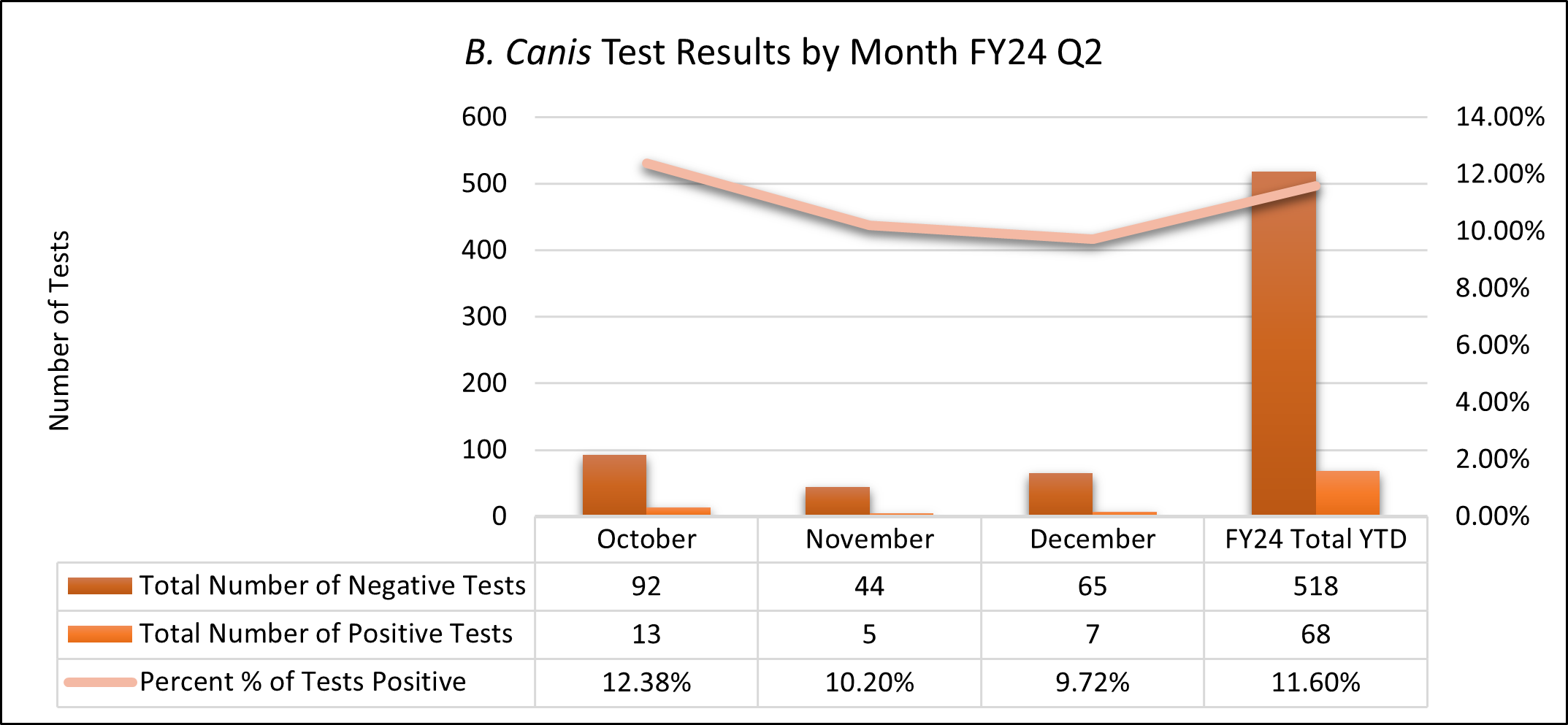
The graph above shows B. canis testing conducted in Q2. The fiscal year-to-date (FY24 Total YTD) data is also provided, showing 518 negative and 68 positive tests, with an overall percent positive rate of 11.60%
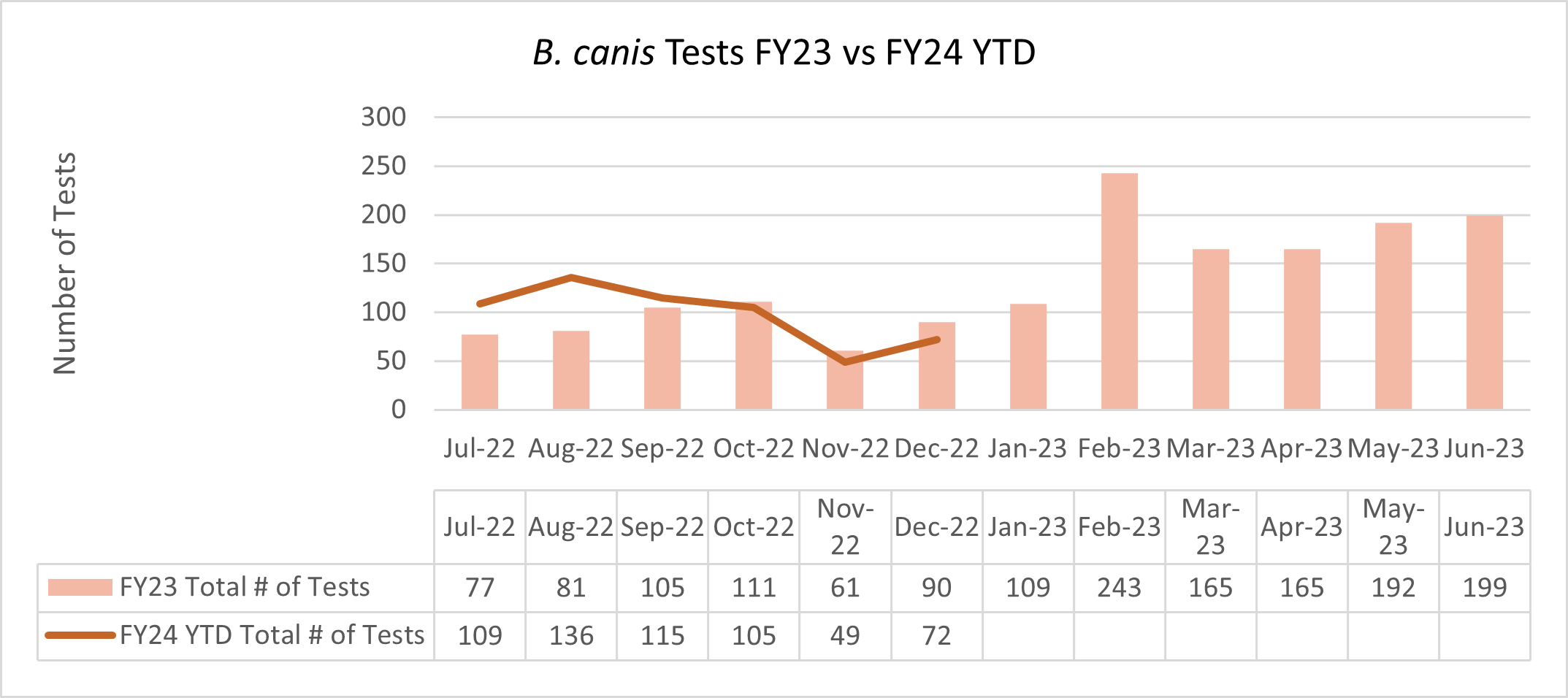
The graph above compares the number of B. canis tests conducted in FY23 and FY24 up to the current quarter. FY23 testing shows a general increase in the number of tests conducted, with a notable peak in February 2024.
Montana Brucella canis (B. canis) Testing by County FY24
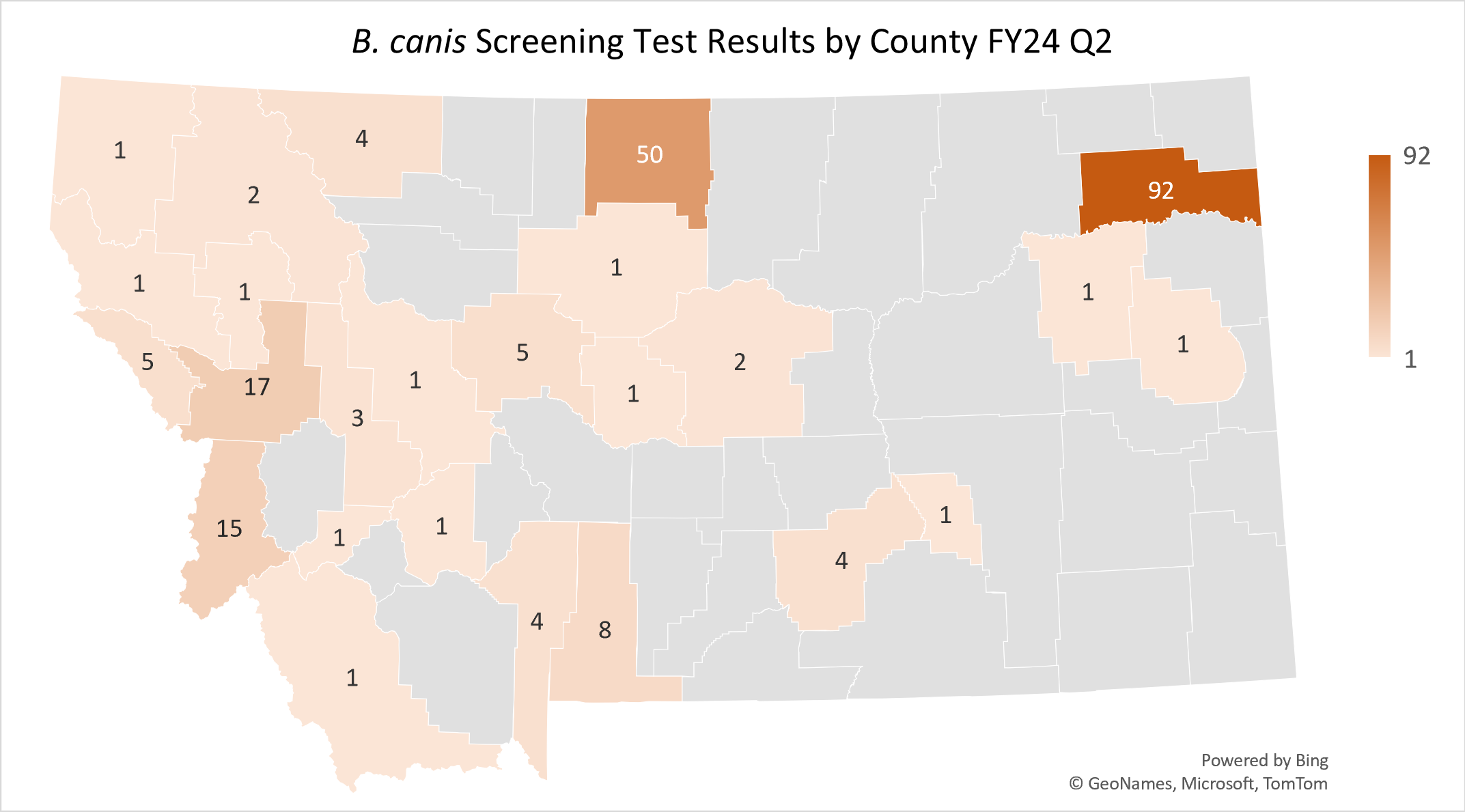
The map above illustrates the distribution of total B. canis screening tests conducted by county in FY24 Q2. The map provides a visual representation of testing efforts and may reflect a region’s focus on monitoring and controlling the spread of B. canis.
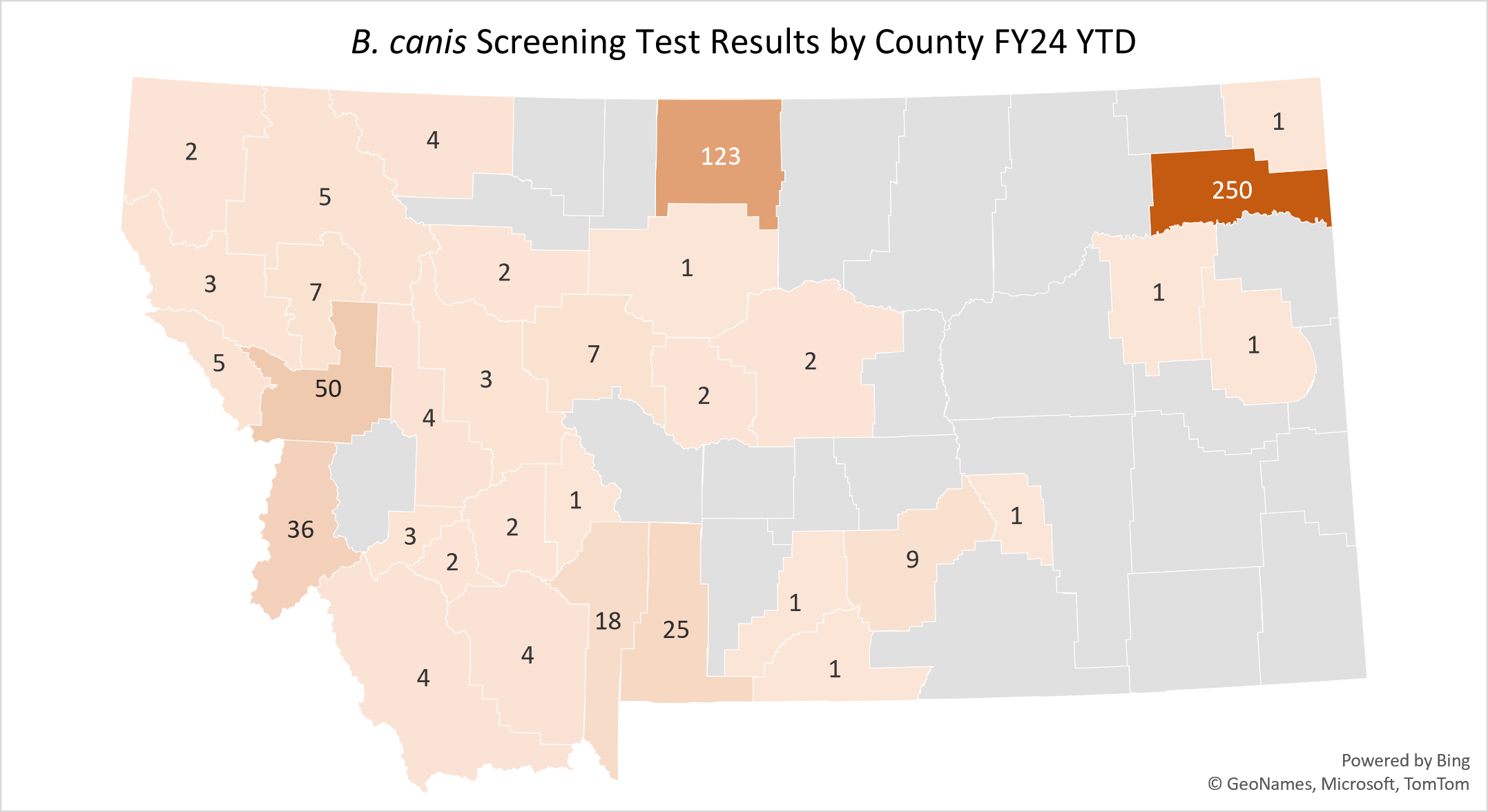
The map above displays the results of B. canis screening tests across Montana Counties for the fiscal year to date (FY24 YTD). The map provides a visual representation of testing efforts and may reflect a region’s focus on monitoring and controlling the spread of B. canis.
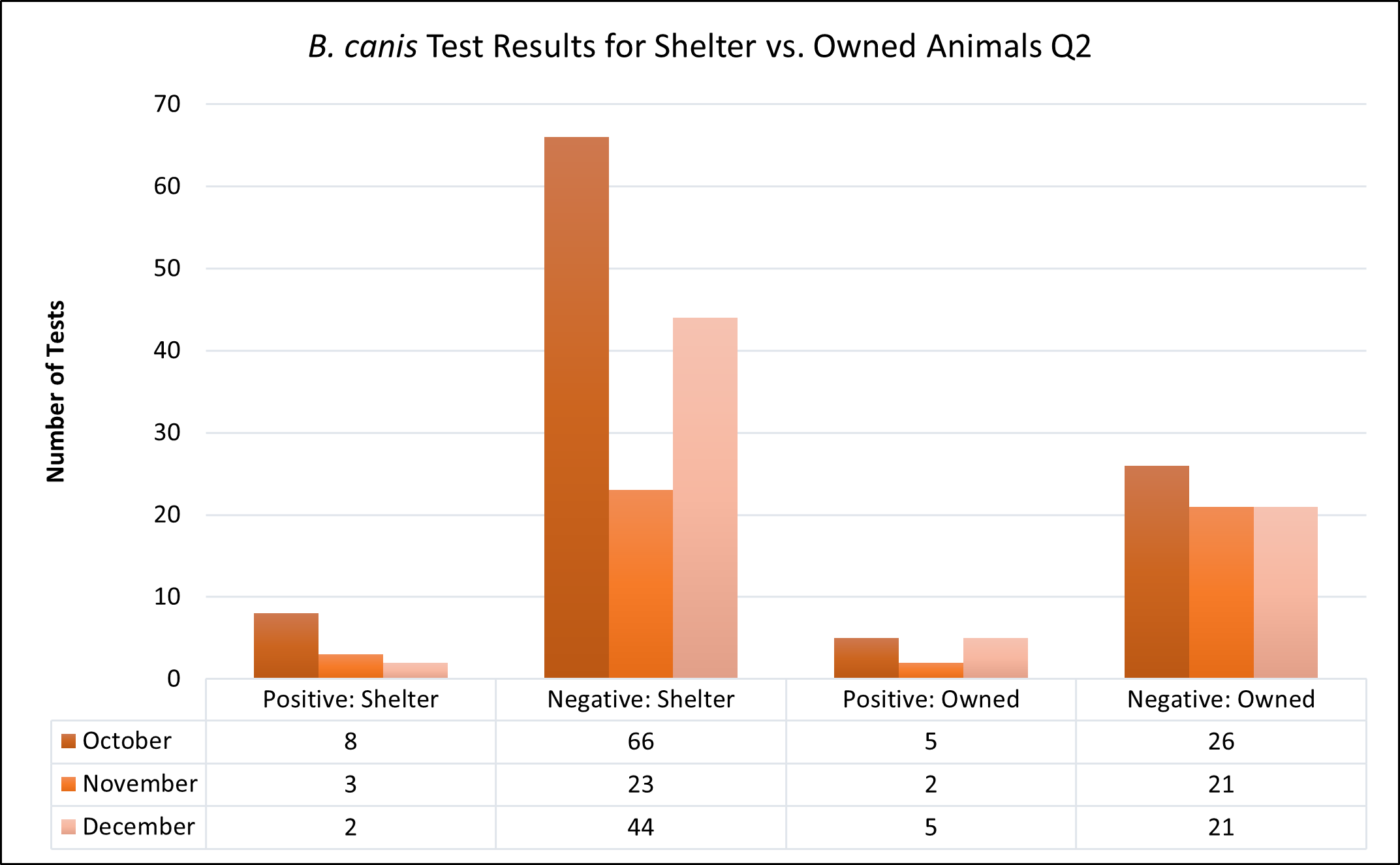
The graph above compares the number of positive and negative test results for Q2. It compares the number of positive and negative test results between these two groups. This graph also demonstrates the significant number of tests that are being performed through shelters. Shelters conducted 146 tests compared to owned animal tests at 80. In other words, shelters accounted for 64.6% of the testing performed in Q2. Which is consistent with the report from Q1 when shelters represented 65% of the testing performed.
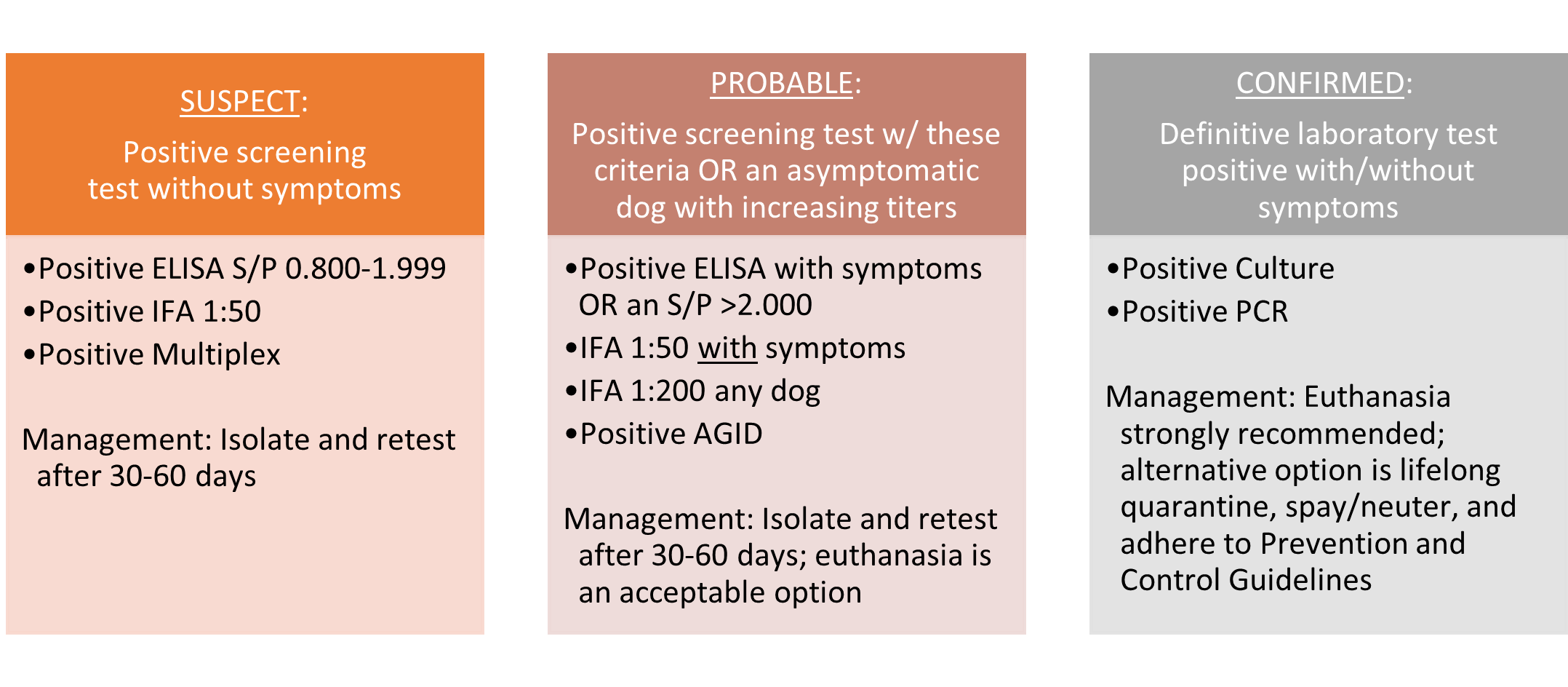
Historical Montana Brucella Canis (B. canis) Testing FY17-FY23
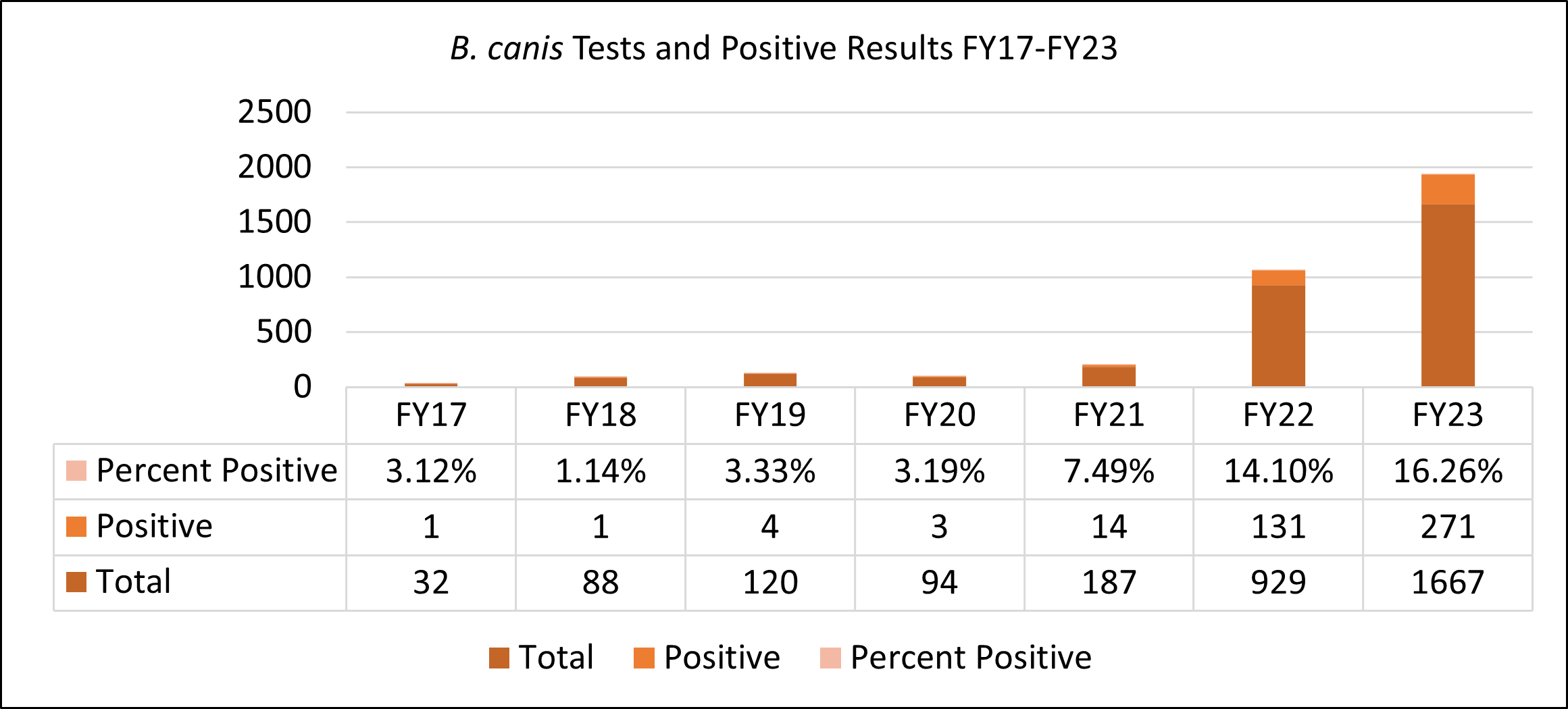
The graph above shows a steady increase in both the total number of tests conducted and the number of positive results over this period. The percentage of positive results has also risen year over year, with a notable jump FY21 after DOL requested increased surveillance due to concerns over increasing numbers of symptomatic and positive dogs. This trend continued in FY22 and FY23 thanks to support for heightened surveillance by the MT veterinary community. With the enhanced detection efforts, we have also noticed a continued increase in the percent positive rate.

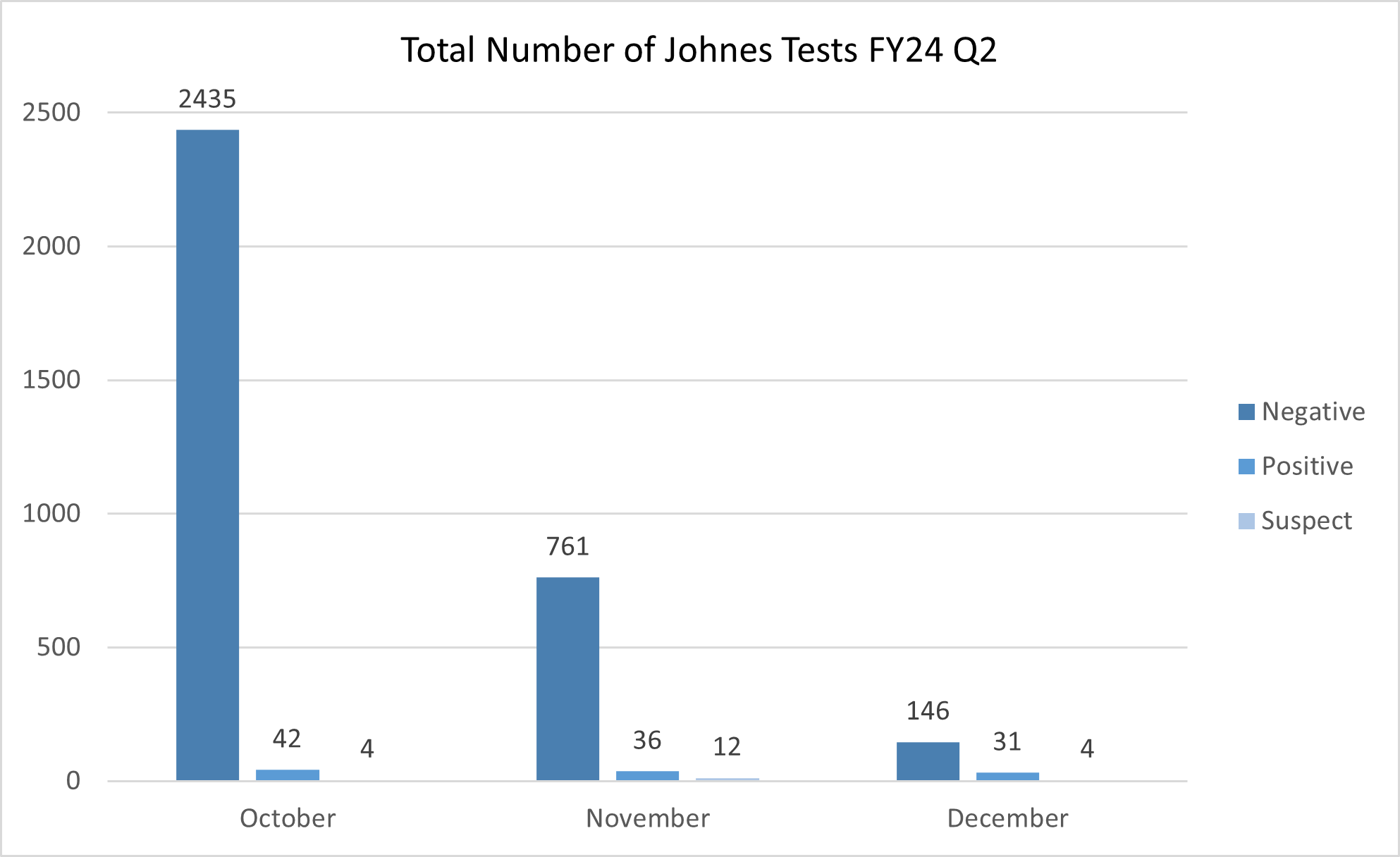
The graph above displays a bar chart summarizing the total number of Johne's disease tests conducted in Q2. This representation highlights the monthly fluctuations in testing volume and the distribution of test results across the quarter, which is essential for monitoring the prevalence and control of Johne's disease in the livestock population.

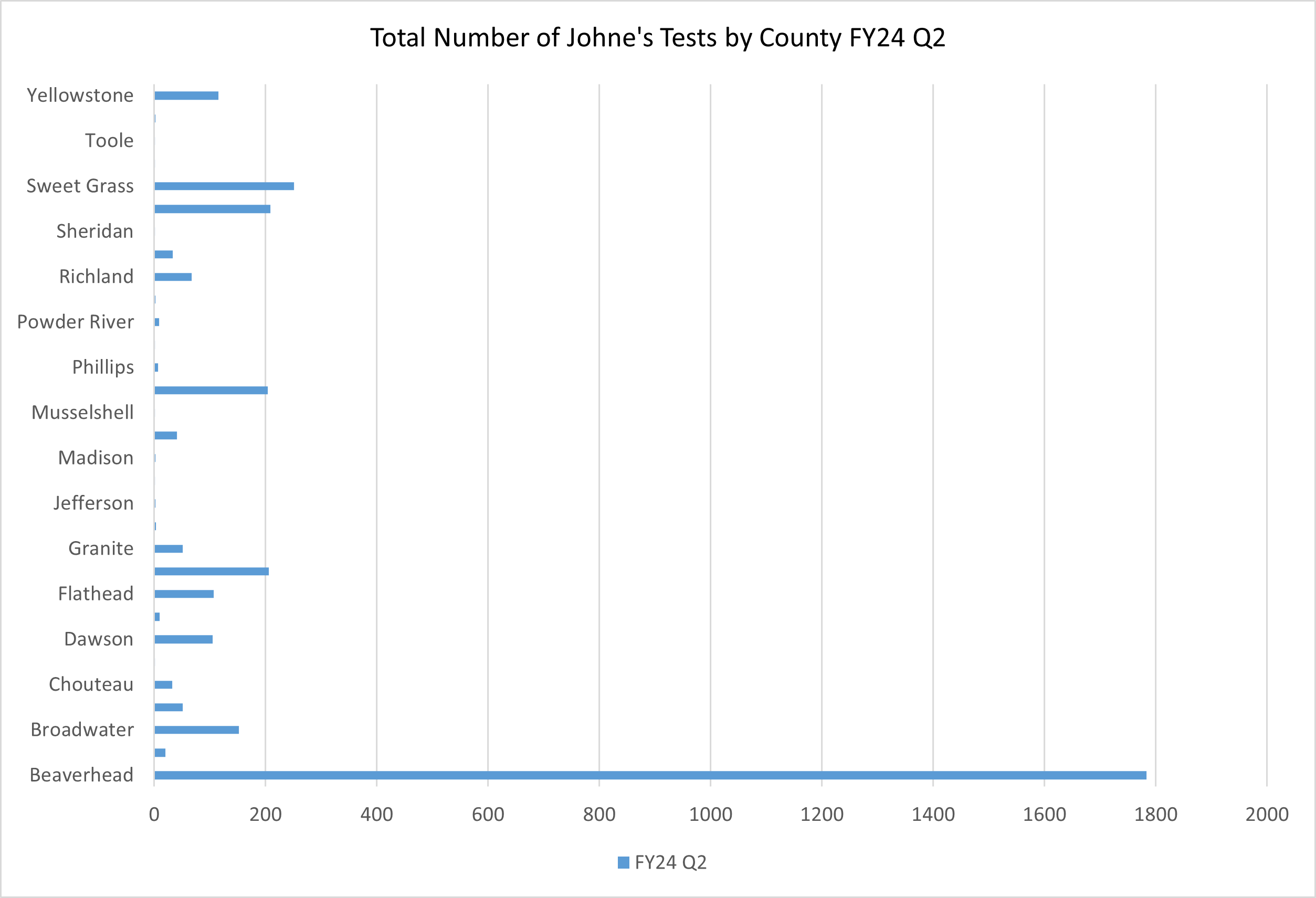
The graph above is a horizontal bar chart showing the total number of Johne's disease tests conducted by county in Q2.
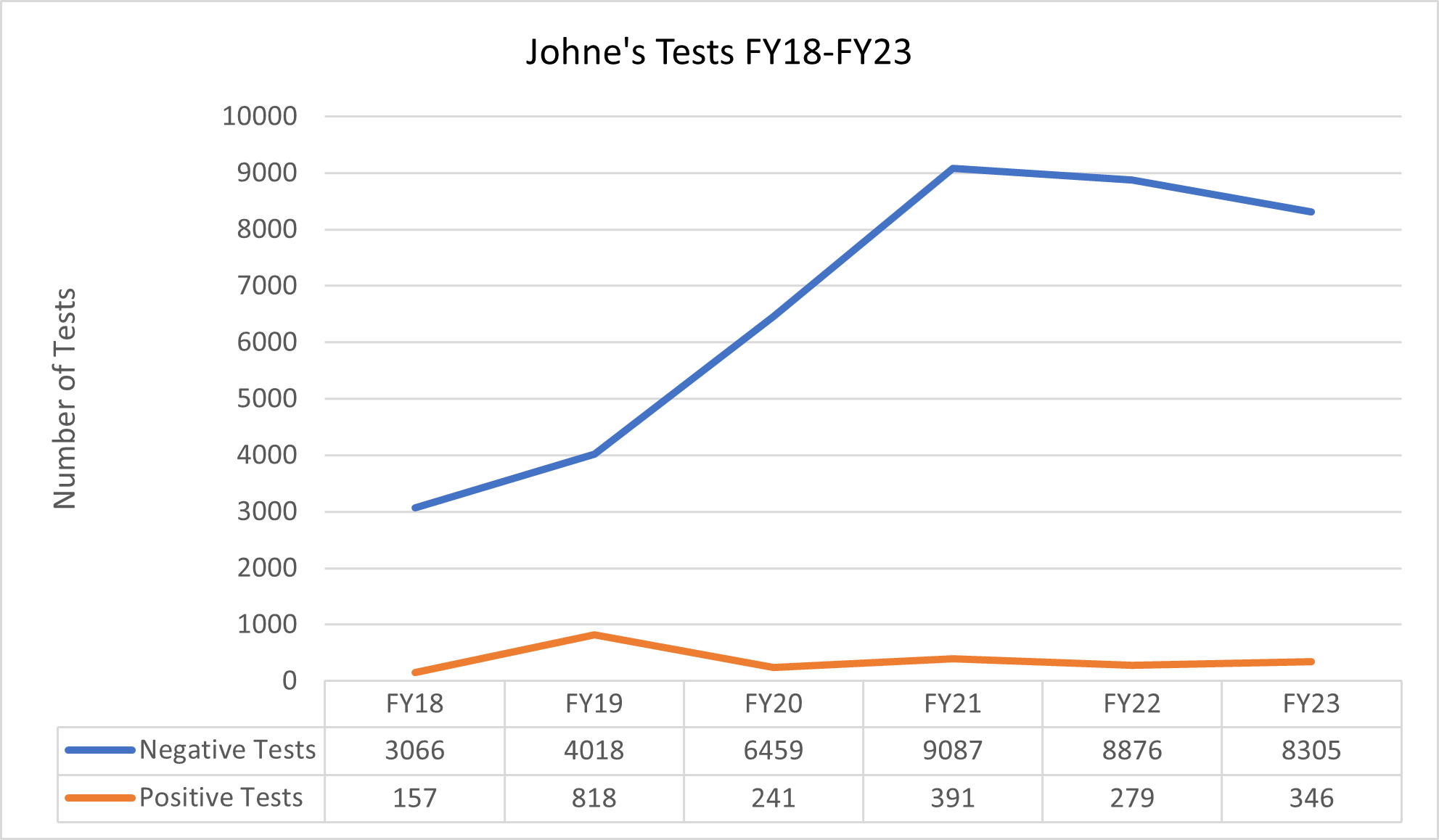
The chart above presents the annual number of Johne's disease tests conducted from FY18 to FY23. The overall number of tests has increased significantly over these years, suggesting enhanced testing efforts, and rising awareness of the disease.
The table below presents a detailed Rabies Test Summary for various animal species during Q2. The total for the fiscal year to date (FY24 YTD) shows 312 negative tests, 21 positive cases of rabies, and 23 unsuitable tests, indicating the presence of rabies in the wildlife population and underscoring the need for ongoing surveillance and public health measures to manage the risk of rabies transmission.
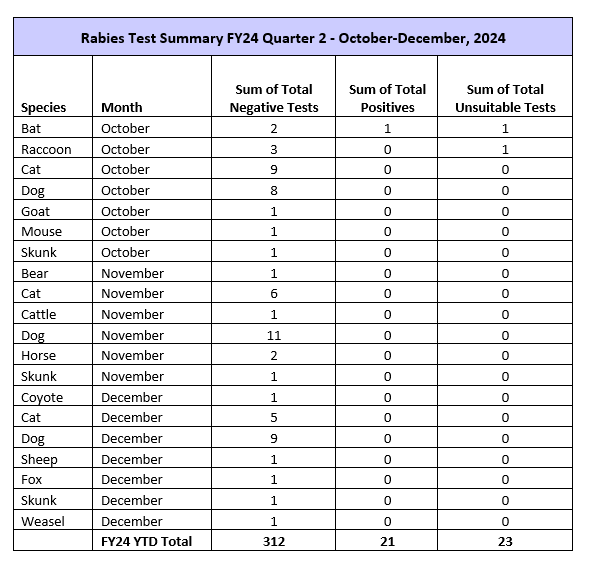


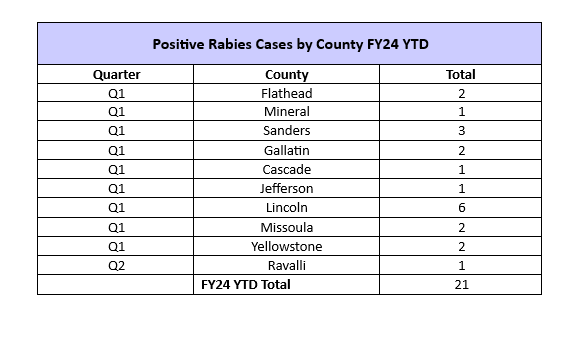
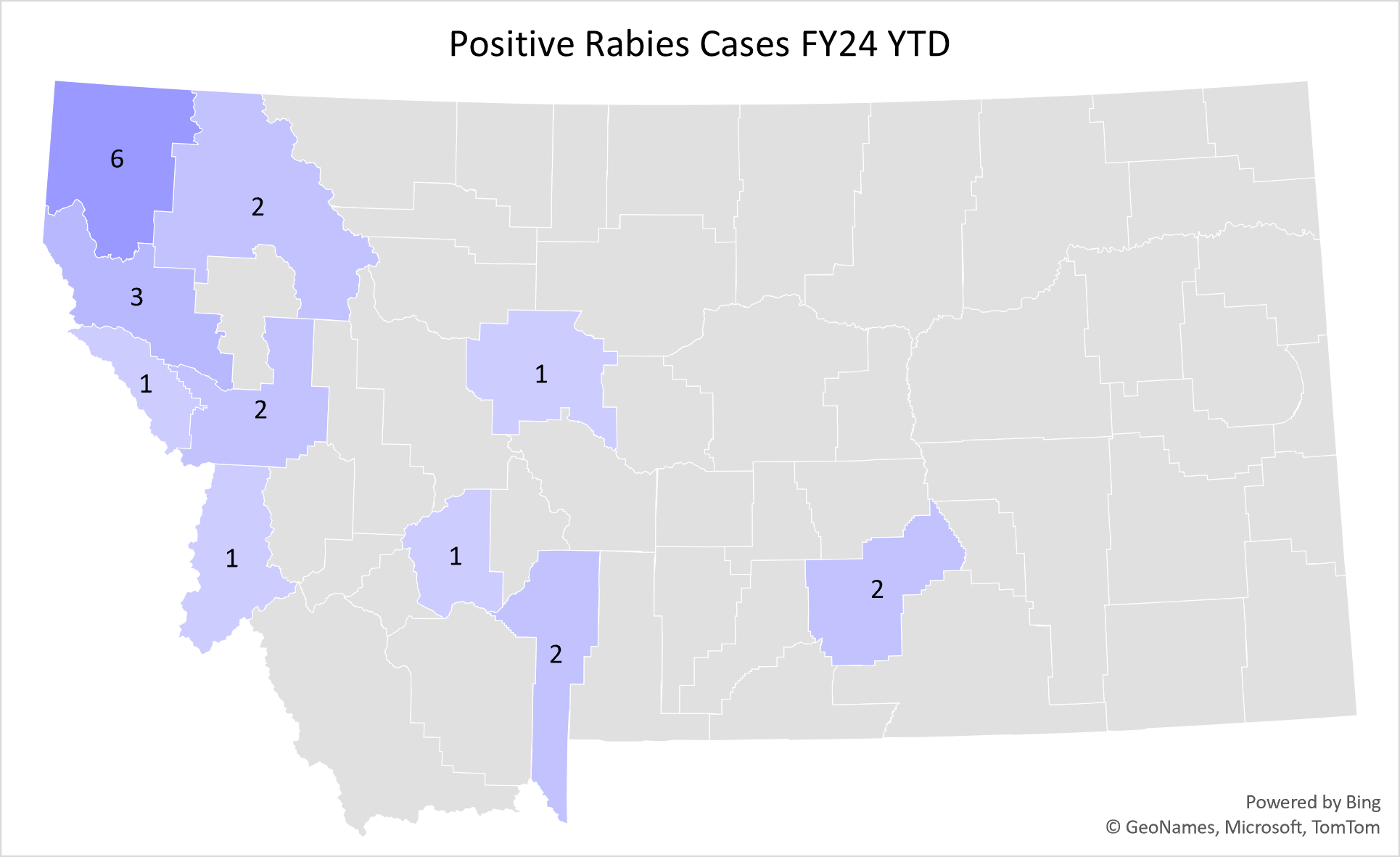
The map above shows the distribution of positive rabies cases across various counties in FY24 YTD. It illustrates the geographic spread of the disease with varying numbers indicated in each affected county. The visualization highlights areas with higher instances of rabies, suggesting regions where public health and veterinary services may need to focus their efforts on control and prevention measures.
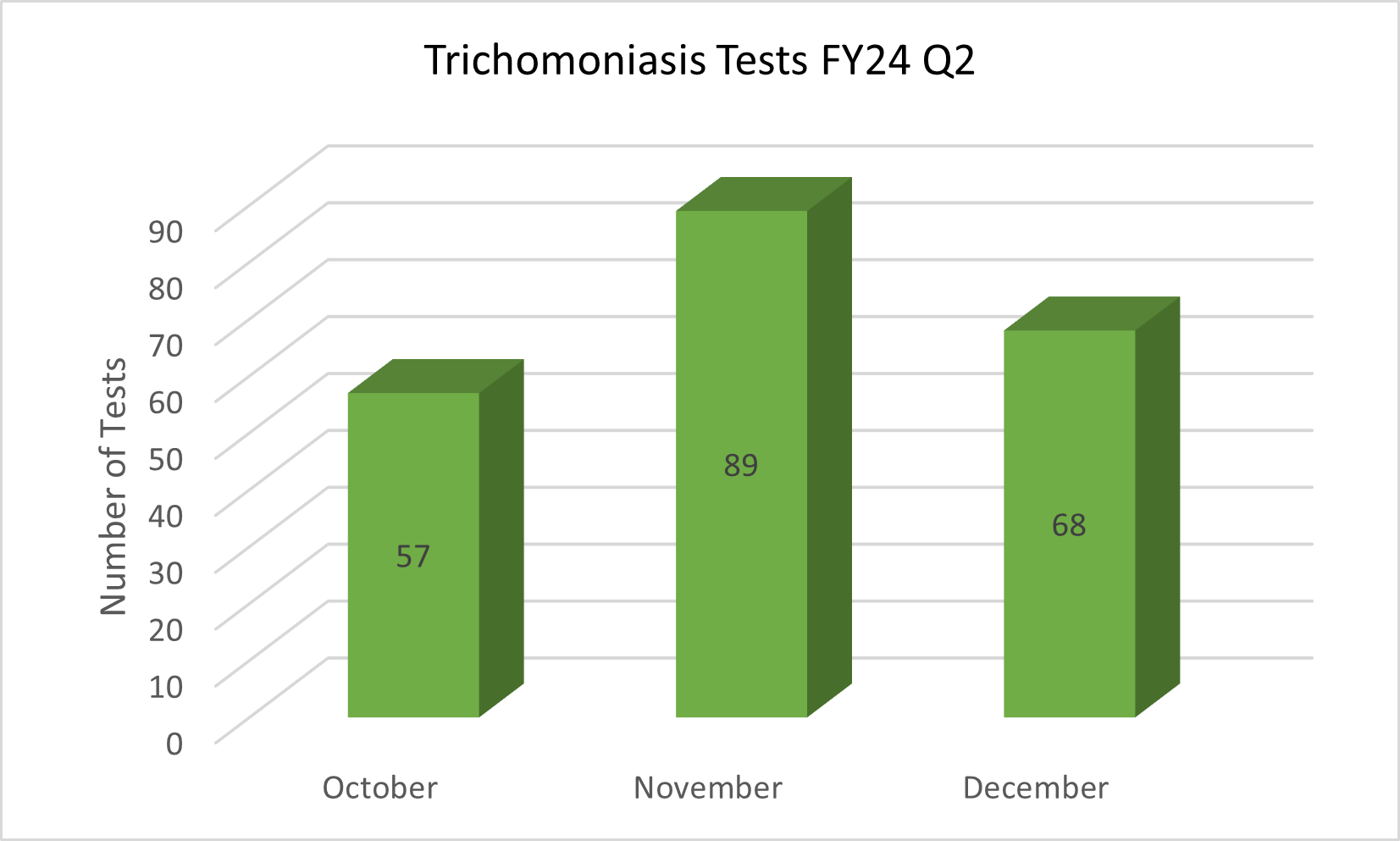
The graph above is a bar chart depicting the number of trichomoniasis tests conducted in Q2. The number of tests increased slightly in November, reaching the highest point in the quarter with 89 tests.
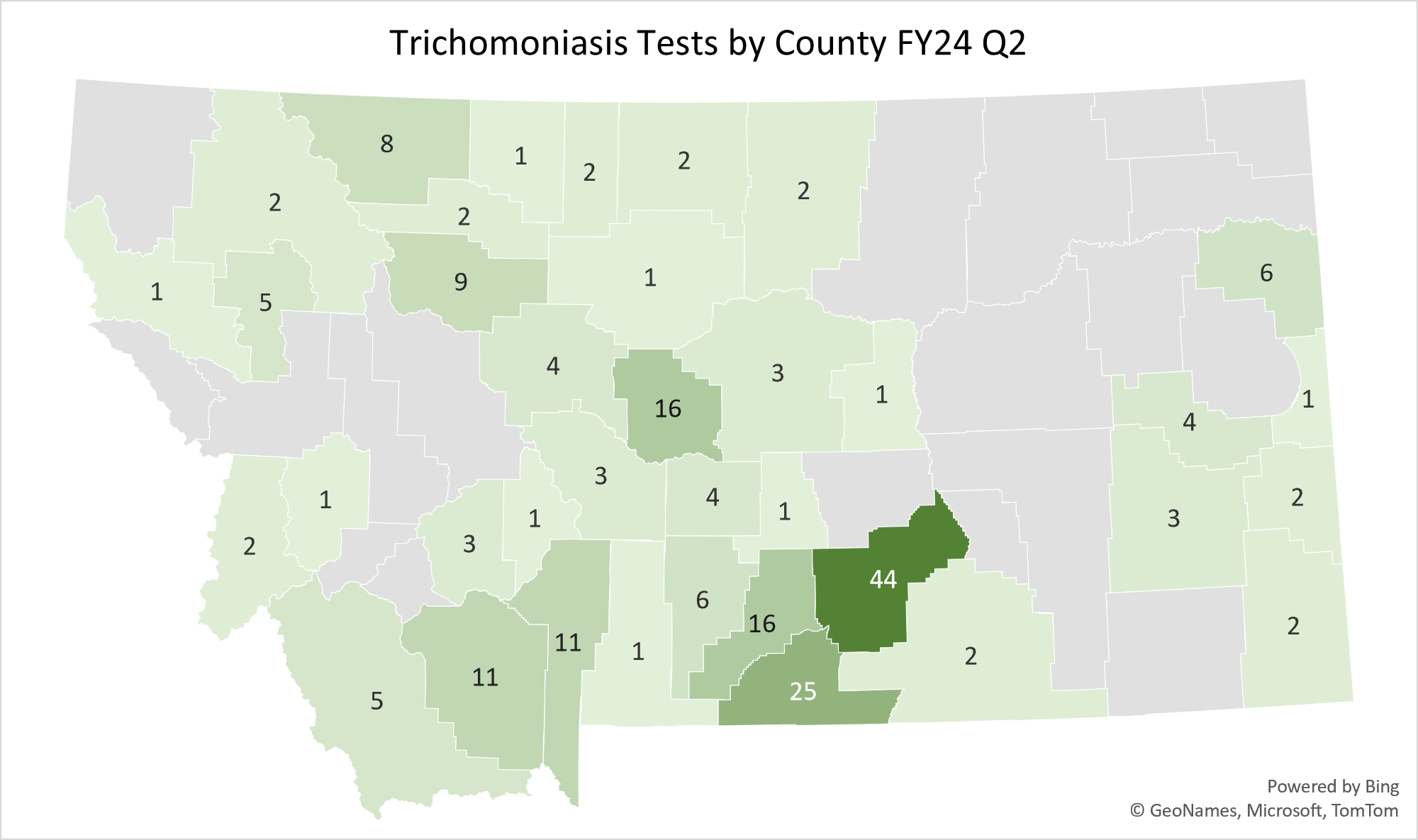
The map above illustrates the distribution of trichomoniasis tests across various counties in Q2. Yellowstone county contains several Certified Semen Services facilities which conduct routine testing for trichomoniasis.
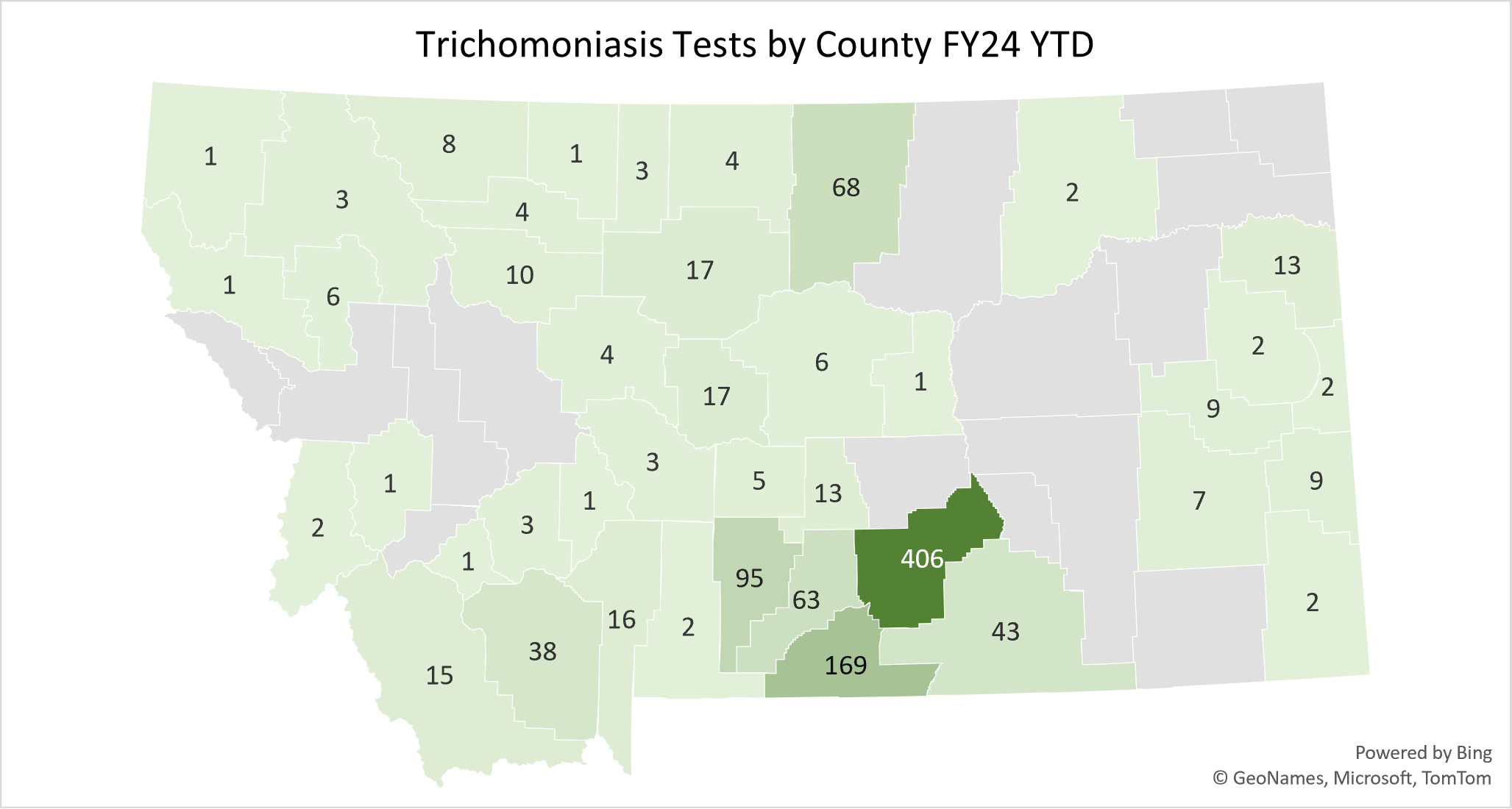
The map above displays the number of trichomoniasis tests conducted by county in FY24 YTD. Yellowstone county contains several Certified Semen Services facilities which conduct routine testing for trichomoniasis.
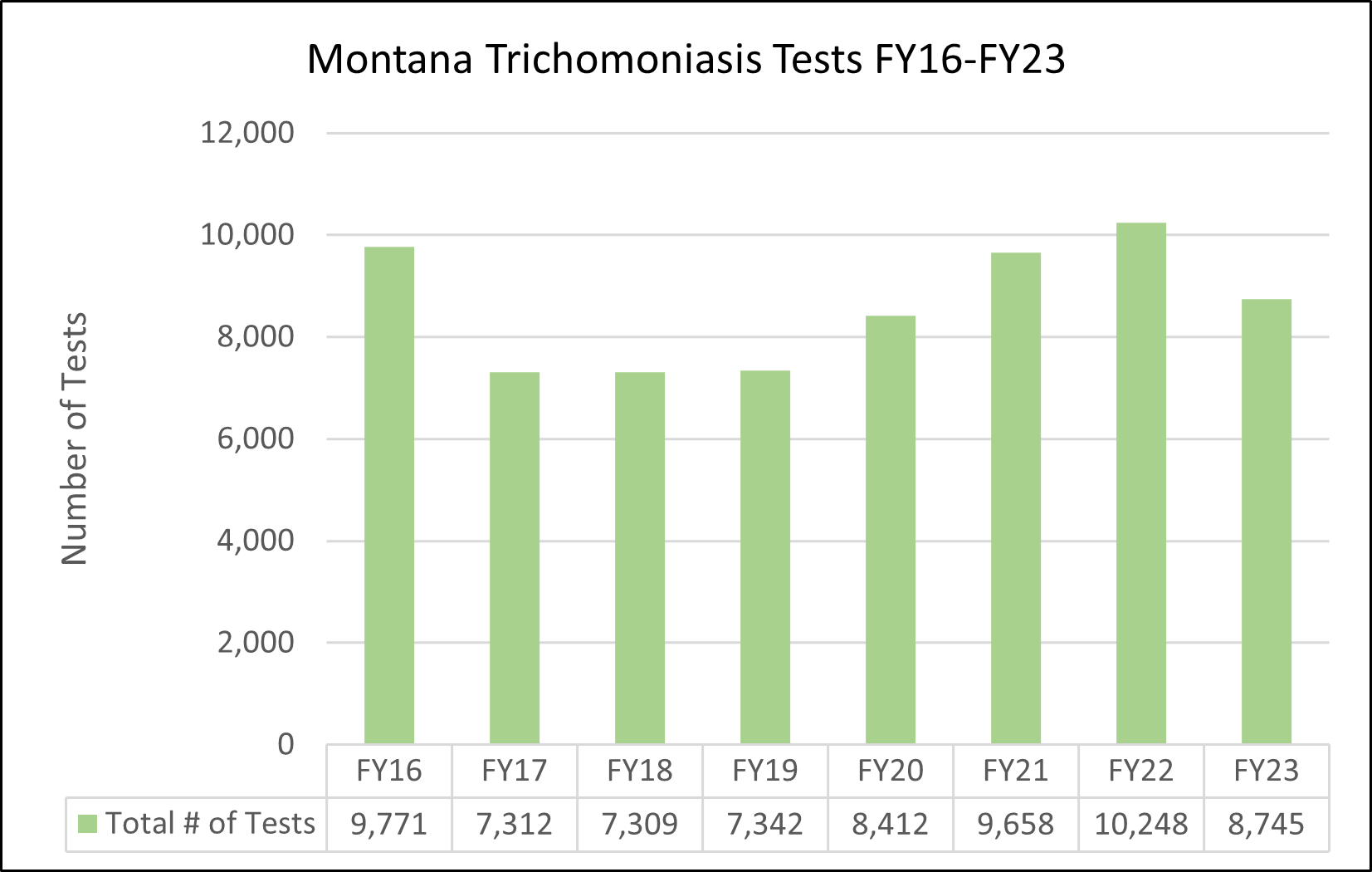
The following table outlines the Foreign Animal Disease (FAD) investigations carried out in Q2 in various counties. The overwhelming need for an FAD in Q2 has been due to Highly Pathogenic Avian Influenza (HPAI) in chickens, with several incidents reported across different locations. Positive cases of HPAI were confirmed in Glacier, Flathead, Park, Sweet Grass, Wheatland, Lewis & Clark, and Missoula County. Additionally, there was an investigation for Rabbit Hemorrhagic Disease (RHDV-2) in Gallatin County, which resulted negative. These investigations ensure rapid response to potential outbreaks and safeguard against the spread of diseases that could impact the state's animal health economy.
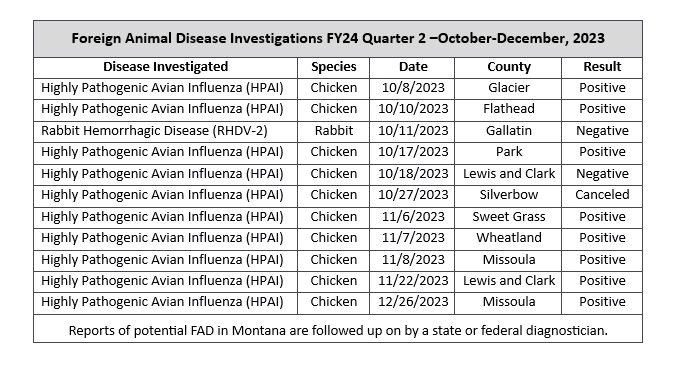
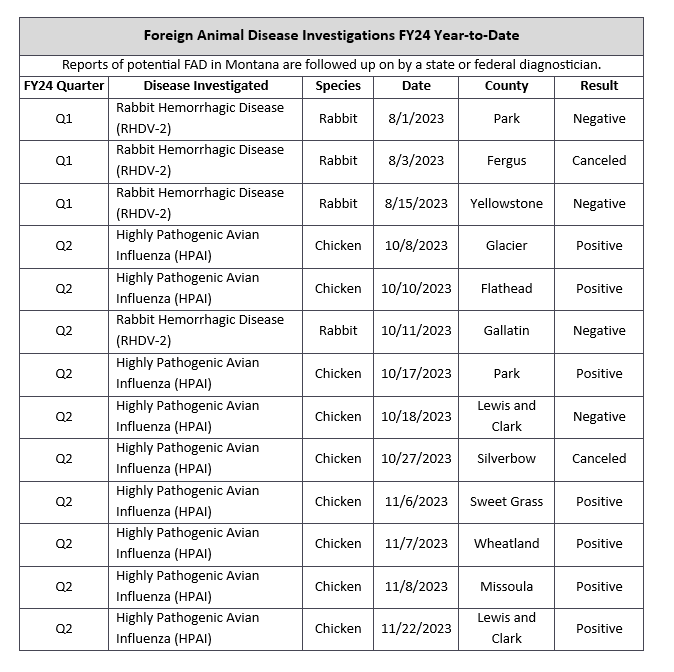
The table below shows testing for other reportable diseases in Montana. Please note, positive test results may not be confirmation of disease depending on the type of test conducted.
